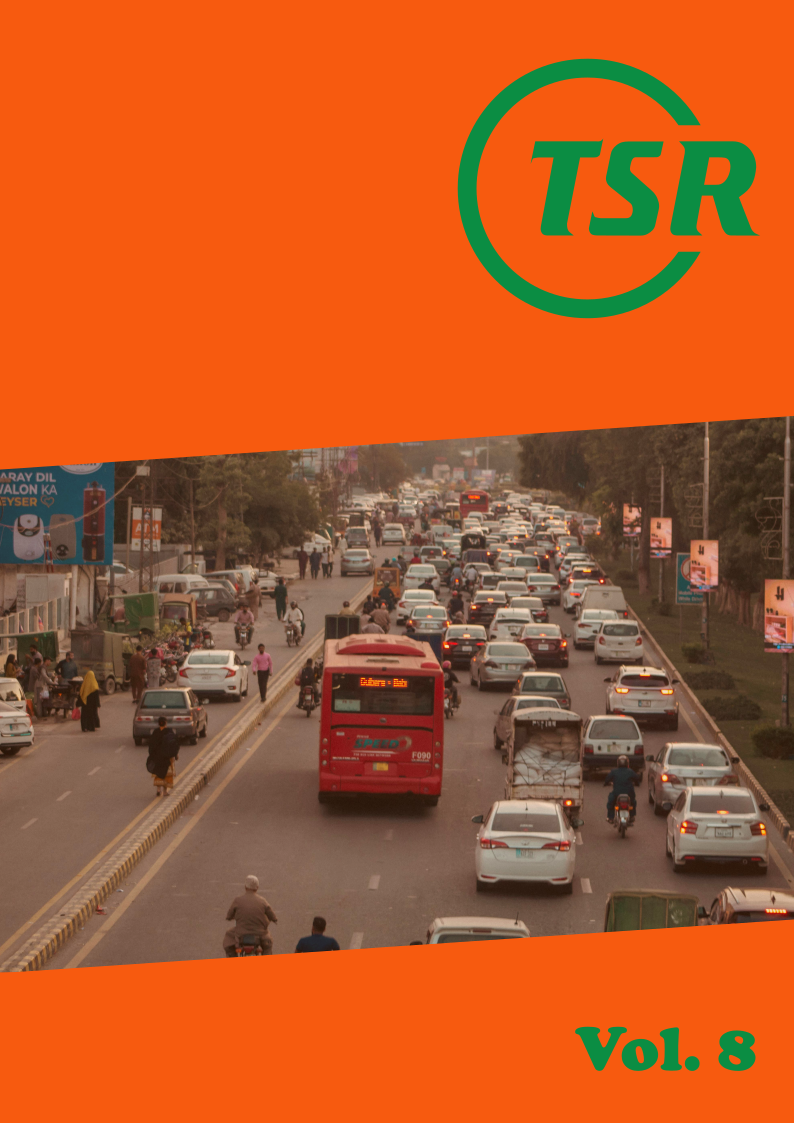Severity Indices as measurement tools for road safety in mountainous highway sections: case study of the Centinela–La Rumorosa highway
DOI:
https://doi.org/10.55329/fvka8530Keywords:
evaluation tool, road safety, severity indicesAbstract
The evaluation of road safety in highway infrastructure requires tools that enable the objective identification and prioritization of risk conditions. This study proposes the development of Severity Indices (SI), a quantitative tool designed to assess the severity level of road segments based on geometric and safety-related variables. Unlike traditional approaches based on qualitative audits, the SI allows for the establishment of severity levels through the integration of measurable and reproducible data. The guiding research question is: How can an index be constructed to quantify the level of road risk based on the physical characteristics of the road and their relationship to crash incidence? To validate the methodology, it was applied to the Centinela–La Rumorosa Highway in Baja California, Mexico—a roadway with high geometric complexity. Variables such as curvature, slope, superelevation, signage, and containment devices were analyzed and correlated with crash records using statistical and spatial analysis in Minitab version 21.1.0. A total of 35 critical points were identified in the descending direction and 28 in the ascending direction, to which SI values were assigned. The results show that this tool allows road safety assessments to be transformed into quantifiable, comparable, and technically informed decision-making processes. The development of the Severity Indices represents a significant methodological contribution to improving road safety evaluation, particularly in contexts where it is necessary to prioritize interventions based on evidence and consistent technical criteria.
Downloads
References
Babić, D., Babić, D., Fiolic, M., & Ferko, M. (2022). Road Markings and Signs in Road Safety. Encyclopedia, 2(4), 1738–1752. DOI: https://doi.org/10.3390/encyclopedia2040119
Calderón Ramírez, J. A., Núñez López, I., García Gómez, L. G., & Montoya Alcaraz, M. A. (2023). Main guidelines in road safety audits: A literature review. Frontiers in Built Environment, 9, 1282251. DOI: https://doi.org/10.3389/fbuil.2023.1282251
Dallos, J. R. A. (2015). Índices de severidad para auditorías de seguridad vial en carreteras colombianas. Revista Virtual Universidad Católica del Norte, 44, 203–221.
Federal Highway Administration [FHWA]. (2006). FHWA Road Safety Audit Guidelines [Technical Report]. Federal Highway Administration.
Federal Highway Administration (FHWA). (2018). Safety Performance Functions for Rural Highways. U.S. Department of Transportation.
Gomes, L., de Souza, M. P., & Almeida, A. T. de. (2021). Road safety assessment using a multi-criteria decision-making approach: A case study in Brazil. Transportation Research Part D: Transport and Environment, 95, 102846.
Heydari, S., Hickford, A., McIlroy, R., Turner, J., & Bachani, A. (2019). Road Safety in Low-Income Countries: State of Knowledge and Future Directions. Sustainability, 11, 6249. DOI: https://doi.org/10.3390/su11226249
ITF-International Transport Forum. (2022). Road Safety Annual Report 2022. The International Traffic Safety Data and Analysis Group (IRTAD). DOI: https://doi.org/10.1787/badaa1a4-en
Mendoza-Díaz, A., Abarca-Pérez, E., & Centeno-Saad, A. G. (2009). Auditorías de seguridad vial de carreteras en operación. Ingeniería, investigación y tecnología, 10(2), 137–144. DOI: https://doi.org/10.22201/fi.25940732e.2009.10n2.013
Minitab. (2024). El teorema del límite central: Las medias de muestras grandes y aleatorias son aproximadamente normales. Minitab.
Monclús, J., Aragón, A., Aparicio, F., & Gómez, Á. (2008). El valor de la seguridad vial. Conocer los costes de los accidentes de tráfico para invertir más en su prevención (Nos. 978-84-611-6857–6).
Montoya-Alcaraz, M., Mungaray-Moctezuma, A., Calderón-Ramírez, J., García, L., & Martinez-Lazcano, C. (2020). Road Safety Analysis of High-Risk Roads: Case Study in Baja California, México. Safety, 6(4), 45. DOI: https://doi.org/10.3390/safety6040045
Ouzzani, M., Hammady, H., Fedorowicz, Z., & Elmagarmid, A. (2016). Rayyan—A web and mobile app for systematic reviews. Systematic Reviews, 5, 1–10. DOI: https://doi.org/10.1186/s13643-016-0384-4
Paliotto, A., Meocci, M., Pappalardo, G., Torre, F. L., Cafiso, S. D., & Tiberi, P. (2025). Analysis of different road network safety analysis procedures. Journal of Traffic and Transportation Engineering (English Edition), 0(0).
Paliotto, A., Meocci, M., Terrosi, A., & La Torre, F. (2024). Systematic review, evaluation and comparison of different approaches for the implementation of road network safety analysis. Heliyon, 10(7). DOI: https://doi.org/10.1016/j.heliyon.2024.e28391
Pan American Health Organization [PAHO] & World Health Organization [WHO]. (2025, February). Road Safety.
Panjee, P., Kaewchueaknang, V., & Amornsawadwatana, S. (2025). A Systematic Literature Review of Cargo Loss Risks in Road Transportation: Impacts and Future Directions. Safety, 11(1), 20. DOI: https://doi.org/10.3390/safety11010020
Pearson, K. (1895). VII. Note on regression and inheritance in the case of two parents. Proceedings of the Royal Society of London, 58(347–352), 240–242. DOI: https://doi.org/10.1098/rspl.1895.0041
Peters, M. D., Godfrey, C., McInerney, P., Munn, Z., Tricco, A. C., Khalil, H., Aromataris, E., & Munn, Z. (2020). JBI manual for evidence synthesis. JBI Manual for Evidence Synthesis, 406–451.
Rodríguez-Alveal, F., Díaz-Levicoy, D., & Vásquez, C. (2021). Análise das atividades sobre variabilidade estatística nos livros de texto do ensino médio: Uma visão a partir das propostas internacionais. Uniciencia, 35(1), 108–123. DOI: https://doi.org/10.15359/ru.35-1.7
Sadeghi, P., & Goli, A. (2024). Investigating the impact of pavement condition and weather characteristics on road accidents (Review paper). International Journal of Crashworthiness, 29(6), 973–989. DOI: https://doi.org/10.1080/13588265.2024.2348269
Salvatore, D., & Reagle, D. P. (2002). Schaum’s outline of theory and problems of statistics and econometrics. McGraw-Hill.
Santos, B., Trindade, V., Polónia, C., & Picado-Santos, L. (2021). Detecting Risk Factors of Road Work Zone Crashes from the Information Provided in Police Crash Reports: The Case Study of Portugal. Safety, 7(1), 12. DOI: https://doi.org/10.3390/safety7010012
Secretaría de Comunicaciones y Transportes [SCT]. (2014). Manual de Señalización Vial y Dispositivos de Seguridad. Secretaría de Comunicaciones y Transportes.
Secretaría de Comunicaciones y Transportes [SCT]. (2018). Manual de Proyecto Geométrico de Carreteras. Secretaría de Comunicaciones y Transportes.
Sedgwick, P. (2012). Pearson’s correlation coefficient. Bmj, 345. DOI: https://doi.org/10.1136/bmj.e4483
Senserrick, T., Boufous, S., de Rome, L., Ivers, R., & Stevenson, M. (2014). Detailed Analysis of Pedestrian Casualty Collisions in Victoria, Australia. Traffic Injury Prevention, 15(suppl. 1), S197–S205. DOI: https://doi.org/10.1080/15389588.2014.935356
Soria, D. A., Zamora, E., Café, E., de León, M. P., & Pineda, M. (2018). Auditorías e inspecciones de seguridad vial en América Latina. Inter-American Development Bank.
Swanson, J. M., Draisin, N., Krasnolucka, A., Vadillo, C., Medina, S., Pérez, B., Kalolo, S., Quyen, B. N. T., Minh, V. N., & Sauber-Schatz, E. (2022). Observing pedestrian-vehicle traffic conflicts in school zones to evaluate the effectiveness of road safety interventions and reduce injuries in Ghana, Vietnam, and Mexico, 2019-2021. Journal of Injury & Violence Research, 14(3), 145–152.
Tian, G., Jia, Y., Chen, Z., Gao, Y., Wang, S., Wei, Z., Chen, Y., & Zhang, T. (2023). Evaluation on Lateral Stability of Vehicle: Impacts of Pavement Rutting, Road Alignment, and Adverse Weather. Applied Sciences, 13(5), 3250. DOI: https://doi.org/10.3390/app13053250
Torrão, G. A., Coelho, M. C., & Rouphail, N. M. (2014). Modeling the Impact of Subject and Opponent Vehicles on Crash Severity in Two-Vehicle Collisions. Transportation Research Record, 2432, 53–64. DOI: https://doi.org/10.3141/2432-07
Tricco, A. C., Lillie, E., Zarin, W., O’Brien, K. K., Colquhoun, H., Levac, D., Moher, D., Peters, M. D., Horsley, T., & Weeks, L. (2018). PRISMA extension for scoping reviews (PRISMA-ScR): Checklist and explanation. Annals of Internal Medicine, 169(7), 467–473. DOI: https://doi.org/10.7326/M18-0850
Ungureanu, Ș., Ciocan, V., Mureșan, C. O., Stan, E., Gavriliță, G. D., Sirmon, A., Pop, C., & Enache, A. (2024). The impact of the COVID-19 pandemic on fatal road-traffic accidents: A five-year study on medicolegal autopsies in Timis County, Romania. Safety, 10(4), 86. DOI: https://doi.org/10.3390/safety10040086
United Nations. (2021). El papel del sistema de las Naciones Unidas en la mejora de la seguridad vial para salvar vidas y la promoción del desarrollo sostenible.
Vilaça, M., Macedo, E., Tafidis, P., & Coelho, M. (2018). Frequency and severity of crashes involving vulnerable road users—An integrated spatial and temporal analysis. Proceedings of the Annual Meeting Transportation Research Board, 1–17.
Waard, D. de, Jessurun, M., Steyvers, F. J., Raggatt, P. T., & Brookhuis, K. A. (1995). Effect of road layout and road environment on driving performance, drivers’ physiology and road appreciation. Ergonomics, 38(7), 1395–1407. DOI: https://doi.org/10.1080/00140139508925197
Walpole, R. E., Myers, R. H., & Myers, S. L. (1999). Probabilidad y estadística para ingenieros. Pearson educación.
Wang, Z., Yue, Y., Li, Q., Nie, K., Tu, W., Liang, S., Wang, Z., Yue, Y., Li, Q., … Nie, K. (2017). Analyzing Risk Factors for Fatality in Urban Traffic Crashes: A Case Study of Wuhan, China. Sustainability, 9, 897. DOI: https://doi.org/10.3390/su9060897
Williams, A. F. (2003). Views of US drivers about driving safety. Journal of Safety Research, 34(5), 491–494. DOI: https://doi.org/10.1016/j.jsr.2003.05.002
World Health Organization [WHO]. (2023). World Health Organization.
Yan, J., Zeng, S., Tian, B., Cao, Y., Yang, W., & Zhu, F. (2023). Relationship between Highway Geometric Characteristics and Accident Risk: A Multilayer Perceptron Model (MLP) Approach. Sustainability, 15(3).
Yang, W., Zeng, J., & Zhang, Y. (2023). Relationship between Highway Geometric Characteristics and Accident Risk: A Multilayer Perceptron Model (MLP) Approach. Sustainability, 15(3), 1893. DOI: https://doi.org/10.3390/su15031893
Yellman, M. A., & Sauber-Schatz, E. K. (2022). Motor vehicle crash deaths—United States and 28 other High-Income countries, 2015 and 2019. DOI: https://doi.org/10.15585/mmwr.mm7126a1
Yuan, Q., & Chen, H. (2017). Factor comparison of passenger-vehicle to vulnerable road user crashes in Beijing, China. International Journal of Crashworthiness, 22(3), 260–270. DOI: https://doi.org/10.1080/13588265.2016.1248226
Zegeer, C. V., Stewart, J. R., Huang, H. F., & Lagerwey, P. (2002). Safety effects of marked vs. Unmarked crosswalks at uncontrolled locations: Analysis of pedestrian crashes in 30 cities. Transportation Research Record: Journal of the Transportation Research Board, 1818(1), 56–66. DOI: https://doi.org/10.3141/1773-07
Published
How to Cite
Issue
Section
License
Copyright (c) 2025 Itzel Núñez López, Leonel García, Julio Calderón-Ramirez, Marco Montoya-Alcaraz, Manuel Gutiérrez, Alejandro Sánchez-Atondo

This work is licensed under a Creative Commons Attribution 4.0 International License.













